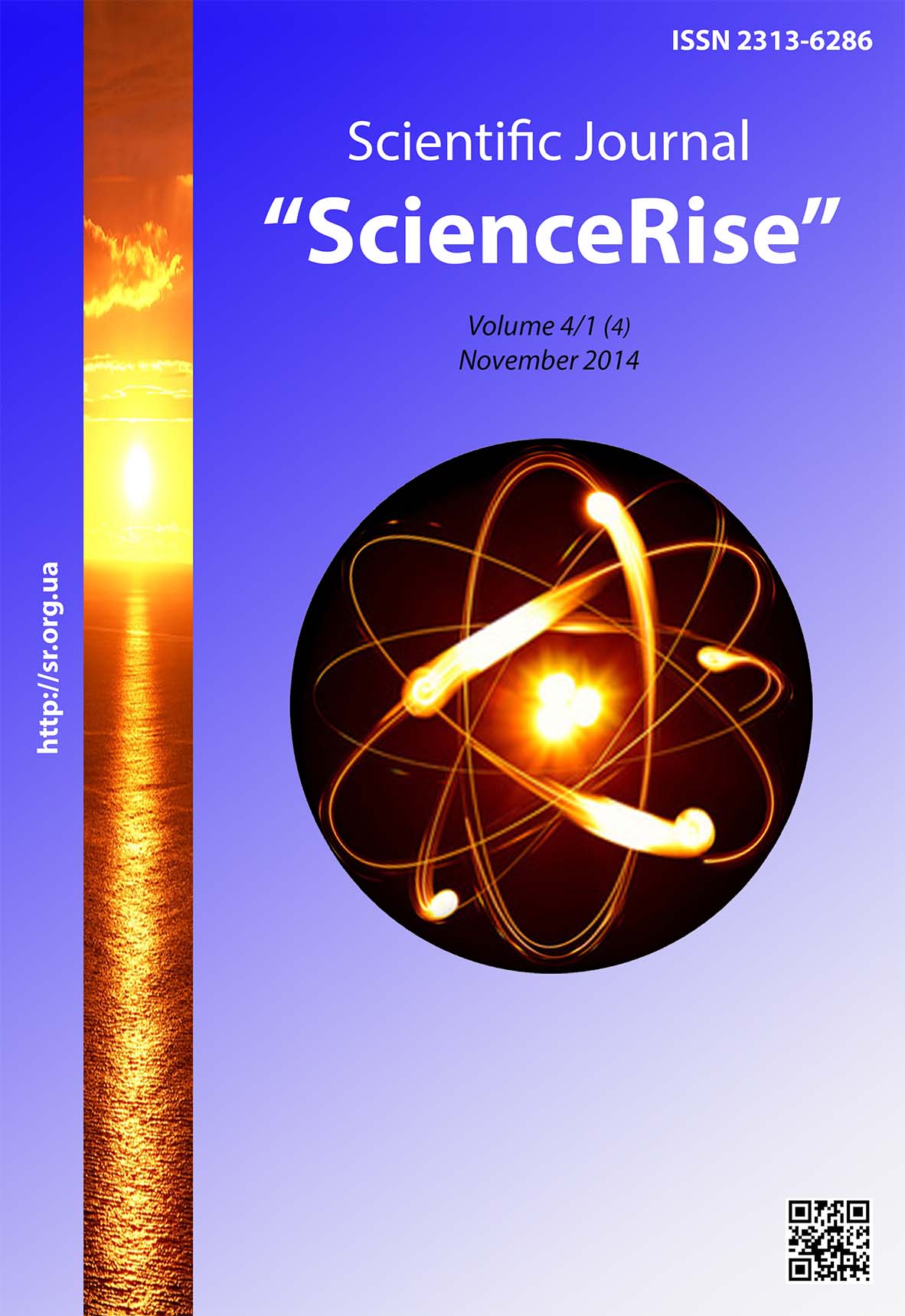Ориентировочный прогноз зимних температур в горном Крыму с учетом субоптимального набора факторов
DOI:
https://doi.org/10.15587/2313-8416.2014.28595Ключевые слова:
прогнозирование, средние температуры зимнего сезона, Ай Петри, множественно-регрессионная модельАннотация
Предложена методика поиска факторов, использование которых в качестве аргументов множественно-регрессионной модели изменений средних температур приземного слоя атмосферы зимнего сезона в Горном Крыму, позволяет получить ориентировочные прогнозы данных характеристик, обладающие наибольшей точностью при упреждениях 1–4 года, при условии, что в будущем статистические связи между ними сохранятся неизменными. Разработан прогноз до 2020 года.
Библиографические ссылки
1. Pozachenyuk, E. A. (2009). Modern Landscapes of Crimea and adjacent waters. Simferopol: Business Inform, 611.
2. Dymnikov V. P., Lykosov V. N., Volodin, E. M. (2005). Modeling climate and climate change. In "Modern Problems of Computational Mathematics and Mathematical Modeling." Moscow: Science, 2, 38–175.
3. Volodin, E. M., Diansky, N. A. (2003). The response of the coupled model of the general circulation of the atmosphere and the ocean on the increase in carbon dioxide. [Text]- Izvestiya, Atmospheric and Oceanic Physics, 39, 193–210.
4. Climate Change 2007 – Impacts, adaptation and vulnerability. Contribution of Working Group II to Assesment Report Four of the Intergovernmental Panes of Climate Change (IPCC) (2007). Cambridge Unsversity Press. Cambridge. UK, 973.
5. Aivazyan, S. A., Mkhitaryan, V. S. (1998). Applied Statistics and Econometrics bases. Unity, 1022.
6. Boks, J., Dzhenkins, G. (1974). Analysis of time series. Forecast and Control. Moscow: Miry, 197.
7. Barabanov, V. S. (2004). Global and regional climate variability. Development of Marine Science and Technology at the Marine hydrophysical institute for 75 years. - Sevastopol: MHI NASU, 442–468.
8. Fedorov, E. E. (1921). Influence of sunspots on the temperature and air pressure. Math. Main Physical Observatory. 3, 64–72.
9. Bogolepov, M. A. (1923). Perturbation of the climate and the life of the Earth, and the people. Berlin, 24.
10. Markov, K. K. (1949). On the connection between changes in solar activity and the Earth's climate. Questions geography. TH., 12, 15–26.
11. Predtechensky, P. P. (1948). Cyclicity in the oscillations of solar activity. Trudy GGO, 8 (70).
12. Shnitnikov, A. V. (1951). Variability of solar activity for the historical period on the basis of some of its earthly manifestations. Bulletin commission to study the sun, 7.
13. Eigenson, M. S. (1957). Essays physiographic manifestations of solar activity. Lviv, 252.
14. Eddy, J. A. (1976). The Maunder Minumum. Science, 192, 1189–1202.
15. Borisenkov, E. P. (1988). Climate variability over the last millennium. [Text]/ L. Gidrometeoizdat, 275.
16. Abdulsamatov, H. I. (2009). The sun dictates the Earth's climate. St. Petersburg. Logos, 197.
17. Mohanakumar, K. (2011). Interaction of the stratosphere and troposphere. Moscow. – FIZMATLIT, 451.
18. Monin, A. C. (1969). Climate as a problem of physics. Moscow: Science, 184.
19. Polonsky, A. B. (2008). The role of the ocean in climate change. Kiev. Naukova Dumka, 184.
20. Lipinski, V. M., Dyachuk, V. A., Babichyenko, V. M. (Ed.) (2003). Climate of Ukraine. Kiev: Rayevskogo Publishers, 343.
21. Enfield, D. B., Mestas-Nunez, A. M., Trimble, P. J. (2001). The Atlantic multidecadal oscillation and it's relation to rainfall and river flows in the continental U.S. Geophysical Research Letters, 28 (10), 2077–2080. doi: 10.1029/2000gl012745
22. Database Index AMO. Available at: http://www.aoml.noaa.gov/phod/amo fag.php
23. Database result reanalysis surface temperature of the oceans. Available at: http://wxweb.meteostar.com/SST/index.shtml?point=730
24. Database Wolf numbers. Available at: http:///www.tituempo.net/climate/.html
25. Database of changes in average concentrations of carbon dioxide in the atmosphere. Available at: http://www.iiasa.ac.at/web-apps/tnt/RcpDb".
26. Meinshausen, M., Smith, S. J., Calvin, K. V., Daniel, J. S., Kainuma, M. L. T., Lamarque, J.-F., Matsumoto, K., Montzka, S. A., Raper, S. C. B., Riahi, K., Thomson, A. M., Velders, G. J. M., van Vuuren, D. (2011). The RCP Greenhouse Gas Concentrations and their Extension from 1765 to 2300.. Climatic Change (Special Issue). Available at: http://www.gao.spb.ru/database/esai.html doi: 10.1007/s10584-011-0156-z
27. Zipkin, J. Z. (1968). Adaptation and learning in automatic systems. Moscow: Science, 400.
Загрузки
Опубликован
Выпуск
Раздел
Лицензия
Copyright (c) 2014 Александр Вадимович Холопцев

Это произведение доступно по лицензии Creative Commons «Attribution» («Атрибуция») 4.0 Всемирная.
Наше издание использует положения об авторских правах Creative Commons CC BY для журналов открытого доступа.
Авторы, которые публикуются в этом журнале, соглашаются со следующими условиями:
1. Авторы оставляют за собой право на авторство своей работы и передают журналу право первой публикации этой работы на условиях лицензии Creative Commons CC BY, которая позволяет другим лицам свободно распространять опубликованную работу с обязательной ссылкой на авторов оригинальной работы и первую публикацию работы в этом журнале.
2. Авторы имеют право заключать самостоятельные дополнительные соглашения, которые касаются неэксклюзивного распространения работы в том виде, в котором она была опубликована этим журналом (например, размещать работу в электронном хранилище учреждения или публиковать в составе монографии), при условии сохранения ссылки на первую публикацию работы в этом журнале .

